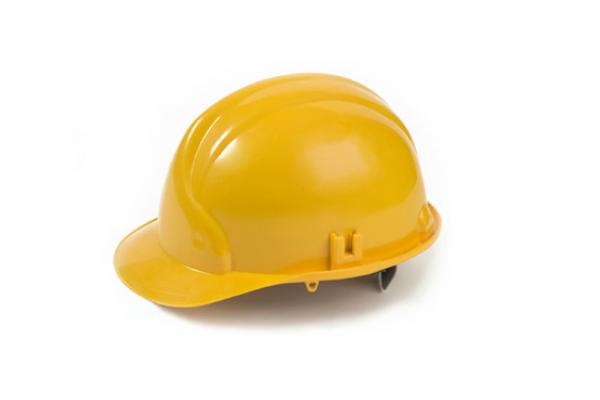
THE SINGLE MOST IMPORTANT THING TO KNOW – SAFETY FIRST!
Whether you have a direct gas-fired furnace or an electrically heated industrial oven, understanding and following the NFPA 86 standard for ovens and furnaces can minimize the risk of a catastrophic event at your plant.
Currently, there are two classifications pertaining to industrial ovens: Class A and Class B.
I’ll start with some working definitions. It is important to discuss Class B ovens first — they are more basic and simpler. Class A ovens include additional features not found on their Class B counterparts.
CLASS B OVEN REQUIREMENTS
Class B ovens are those units meant solely for clean processes
“…wherein there are no flammable volatiles or combustible materials being heated.”
CLASS A OVEN REQUIREMENTS
Conversely, Class A ovens are those units that can be utilized in processes with present solvents, volatile materials, or other flammable or combustible contents. Quoting NFPA 86, there are several materials cited as requiring the Class A rating. These specifically include:
- Paints, powders, inks and adhesives from finishing processes such as dipped, coated, sprayed and impregnated materials
- The substrate material
- Wood, paper and plastic pallets, spacers or packaging materials
- Polymerization or other molecular arrangements: potentially flammable materials such as quench oils, waterborne finishes, cooling oil, or cooking oils that present a hazard are ventilated according to Class A standards.
It is important to note that this list is not all-inclusive; rather, it serves as an overview of the types of materials or processes that are considered Class A in nature.
OVEN SAFETY: WHAT’S IN IT FOR YOU?
The answer to that question is really another question: What’s not in it for you?
Reality: Everyone is impacted and everything is at stake, every single day — reputation, bottom line, personnel confidence and morale, market position, profit, marketing, cost accounting, insurance rates, and corporate survival.
Disregarding industrial oven safety features or removing safeguards is inviting disaster through your company’s front door. Life becomes an even more dangerous and random game of chance — like Russian roulette with only one empty chamber.
For example, if just one safety is jumpered — say, an airflow switch — the likelihood of an accident occurring has increased exponentially. If flammable fumes build up in the oven’s work area, an explosion can take place. This would damage the oven, surely, but what of the other costs?
Other equipment may become damaged or inoperable. The building itself may be damaged due to flame or the sheer force of the event. Most important, though, is the human element — an employee, just someone trying to make an honest living — may be hurt, incapacitated or killed. The economic, legal and moral repercussions of such an accident can be widespread, and the shock waves often are far reaching — not only within the company, but in the individual lives with which your company is intertwined.
SAFETY is a big word — Safety is a broad-brush concept that has been drummed into the collective industrial conscience for quite some time. However, the long-term battle to be safe is so often won and lost by small, seemingly insignificant practices (like bypassing a simple switch) that occur day-to-day.
Oven safety — what’s in it for you? A lot more than one might think.
ELECTRICALLY HEATED OVENS
With working definitions established, let’s look at how they impact the way industrial ovens and furnaces are designed, equipped and applied.
CLASS B ELECTRICALLY HEATED OVEN REQUIREMENTS
Electrically heated Class B ovens must be equipped with the following safety equipment:
Airflow Safety Switch – An airflow safety switch should be integrated into the recirculation fan assembly, where it will shut down the unit should the fan cease operation. This prevents the heat source from continuing to operate without recirculation air moving past it.
Manual Reset Excess Temperature Control – Commonly known in the industry as a hi-limit control, this control should be set approximately 50°F (10°C) higher than the oven setpoint or maximum rated temperature. Should the unit produce too much heat; the hi-limit switch will trip and shut down the heaters once the excess temperature setting is reached.
Backup Contactors – These are required as a fail-safe. If the primary contactors become fouled or fused, the backup contactors will ensure that the heaters shut down if an over-temperature condition occurs.
CLASS A ELECTRICALLY HEATED OVEN REQUIREMENTS
Electrically heated Class A ovens and furnaces must have all of the safety controls specified for Class B. In addition, the following items are required:
Powered Exhaust Fan – The industrial oven must have an exhaust fan of sufficient size (measured in cubic feet per minute) to evacuate a sufficient quantity of fumes, smoke, etc., so that a build-up of hazardous materials in the oven’s work area does not occur during processing. The amount (cfm) of required exhaust depends on many variables, including solvent/volatile material level, temperature, cycle time and
Cycle Dynamics (ramp rate and soak duration).
Extra Airflow Safety Switch – A second airflow safety switch also is required. Should the exhaust fan fail for any reason, this second airflow switch acts as a fail-safe for the primary airflow switch and will shut down the heaters.
Purge Timer – A timed purge is required prior to heating. During this period, the recirculation and exhaust fans remove any flammable vapors and/or gases that may have entered the work area while the oven was idle.
Extra Kilowatts (if required) – Electrically heated industrial ovens equipped with Class A features may require additional kilowatts. Because the oven will be forcibly removing heat from the work area (via the required exhaust fan), more heaters may be needed to maintain process temperatures, depending on the heat up time and the maximum operating temperature. If this issue is not considered in the design stage, the industrial oven may have a poor response time or be unable to reach the operating temperature necessary to run the load.
Extra Backup Contactors (if extra kilowatts are added) – If the industrial oven is designed with extra kilowatts, additional backup contactors are required to provide adequate safeguards. Backup contactors will ensure that the heaters shut off should the primary contactors become fouled or fused.
Internal Pressure Relief – The final extra that must be included in an electrically heated Class A industrial oven is internal pressure relief. If a build-up of fumes leads to an explosion, this required feature would ensure that the event has an avenue of “controlled” release. Pressure relief typically is accomplished by incorporating pressure-relief doors or a caged pressure-relief panel.
DIRECT GAS-FIRED OVEN REQUIREMENTS
All direct gas-fired industrial ovens automatically carry the Class A rating because they introduce products of combustion into the oven work area. These volatile materials must be exhausted in a forcible manner. Direct gas-fired Class A industrial ovens must include the following safety features:
Powered Exhaust Fan – This fan serves to forcibly remove any products of combustion, or process by-products, to reduce the chance that a hazardous situation will develop.
Airflow Safety Switches – On gas-fired industrial ovens, as many as three airflow safety switches are required. All Class A industrial ovens must incorporate airflow safety switches connected to the exhaust fan assembly and the recirculation fan assembly. Also, if the burner is equipped with a combustion blower, an airflow safety switch must be installed on it. Should any one of the fans fail, the appropriate airflow safety switch will trip and shut down the burner.
Manual Reset Excess Temperature Controller – This control should be set approximately 50°F higher than the oven setpoint or maximum rated temperature. If the industrial oven or furnace reaches the excess temperature setting, the hi-limit will shut down the burner.
Purge Timer – As with electrically heated units, the purge timer is intended to ensure that the exhaust fans remove any build-up of combustible fumes in the work area prior to igniting the burner.
Internal Pressure Relief Panel – This panel serves as a “controlled” avenue through which explosive forces may be released — just as with an electrically heated Class A oven.
High-Low Gas Pressure Switch – In the event that a sensor detects that the gas flow is too high or too low, the high-low gas pressure switch will automatically shut down the industrial oven. Fairly even gas pressure must be supplied to maintain the correct air-to-fuel ratio for proper flame characteristics and to prevent combustible vapor build-up.
Flame Safety/Spark Ignition Control – Finally, on direct gas-fired industrial ovens, a flame supervision device is required. Upon startup, this control will send a high voltage signal to the spark plug for ignition, opening the pilot gas valve so the pilot flame can be ignited. Once the flame safety system detects a pilot flame, the high voltage signal stops and the main gas valves open, allowing the unit to go to high fire and begin processing. If a pilot flame is not detected, the flame safety stops the ignition attempt.
EXPLOSION-PROOF INDUSTRIAL OVENS & FURNACES
The final oven category is an explosion-proof rating. Covered in part in NFPA 70, this type of construction can be very expensive to purchase when compared to its Class B and Class A counterparts. Do not confuse an explosion-proof rating with Class A requirements — explosion-proof industrial ovens are complex thermal processing units with requirements too extensive to cover in any detail in this article.
In review, according to NFPA 86:
- There are 2 classes of industrial ovens: Class A and Class B.
- Class A ovens are rated for flammable materials.
- Class B ovens are not rated for flammable materials.
- All direct-fired industrial ovens must carry the Class A rating and be equipped with the appropriate safety features.
- Explosion-proof ovens require a host of special and costly considerations that are outlined in NFPA 70.
ABOUT PRECISION QUINCY OVENS
Precision Quincy (aka PQ Ovens) is an industrial oven manufacturer in the United States but we also do industrial
oven repairs and rebuilds, plus we offer professional oven retrofitting services.



